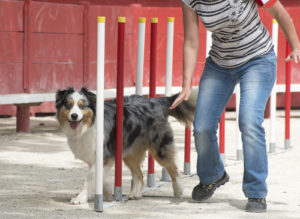 It’s been decided, being a dog trainer is the way to go. But how does one even get started? There are a fair number of people out there who decide they know enough about dogs, have read enough books and promote themselves as trainers. Without proper training or mentoring, an uncertified trainer may do more harm than good when it comes to a dog’s education.
It’s been decided, being a dog trainer is the way to go. But how does one even get started? There are a fair number of people out there who decide they know enough about dogs, have read enough books and promote themselves as trainers. Without proper training or mentoring, an uncertified trainer may do more harm than good when it comes to a dog’s education.
Related: Review of Spirit Dog Online Training
Certified Professional Trainer
Certified Professional Dog Trainer (CPDT) has gone through a certification process, through an accredited program. Typically a training certification program takes about a year where the student will learn through coursework and hands on training to be an effective trainer. Finding a trainer who is KA (knowledge assessed) is even better. One who is KSA (knowledge and skills assessed) has gone one step further in proving she knows what she’s doing and is serious about effectively training dogs. Professional dog trainers will keep on the latest trends, debates and ideas in the dog world.
Once a trainer has become certified they can then decide which specialty to choose.
Private in home basic obedience– Going into people’s homes and teach them how to better the relationship with their dogs. They will need people skills, business cards and marketing savvy to enter the training world.
Therapy– Training a dog to be a service dog is incredibly rewarding and requires a lot of time and patience. One would do best to become involved with an agency that specializes in training and adopting out service dogs to people in need.
Shelter work– Trainers are in greater demand for shelters and rescues, than ever before. It is important to have a trainer on hand to assess behavioral issues on intake and work with the dogs to make them more adoptable. Most trainers learn on the job at a shelter and find the vocation extremely challenging yet highly rewarding.
Sports– There are so many sporting events for dogs, it shouldn’t be difficult for a sports trainer to find their niche. Research is a necessity for a trainer to decide which sport (or sports) they would like to concentrate on. Find a training facility that specializes in the chosen activity and become involved. If there aren’t any close, open one. There is always a need for training facilities.
Becoming a behaviorist
Further education comes by way of a degree, either a MA or a PHd in animal behavior issues. In addition to the extra schooling, the few who have decided to pursue this course, have gone through rigorous testing and training to earn the certification of CAAB (Certified Applied Animal Behavior). They are the big guns, who have put in the time, effort and education to become professional behaviorists. If an owner comes across a CAAB-KA then that particular behaviorist has gone through the Knowledge Assessed (KA) requirements of canine training.

Comments are closed.